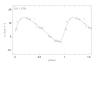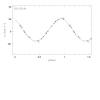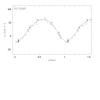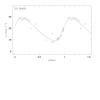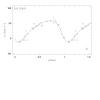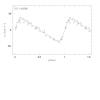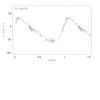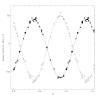
One of our on-going program is the observation of binary systems with one component chemically peculiar stars. The main goal of this project is to resolve the orbit of SB1 and/or SB2 systems by means of accurate radial velocity measurements.
The first paper of this series has been published in 1999:
F. Leone,
G. Catanzaro
1999,
Astronomy and Astrophysics, 343, 273
The following pictures have been extracted from it (click to enlarge).
![]()
A new project concerns the study of SB2 systems with HgMn components. The first object analyzed was HD191110, whose radial velocities curves of both components are shown in the following figure:
P = 9.34661 days e = 0.1 w = 220° g = -8.31 km s-1 mA/mB = 1.08 |
more details could be found in the section Abundances of this site or in the paper:
HD 191110 a SB2
system with Hg and HgMn components.
Orbital elements and abundance analysis.
G. Catanzaro,
F. Leone, P. Leto
2003,
Astronomy and Astrophysics, 407, 669
![]()
New results about the study of SB systems with a HgMn component were obtained by our group and published in:
Orbital solutions
for SB2
systems with a HgMn component.
G. Catanzaro,
P. Leto
2004, Astronomy and
Astrophysics, 416, 661
examples of the studied systems have been reported in the following figures
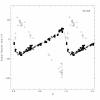 |
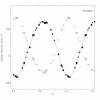 |
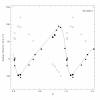 |
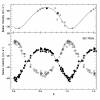 |
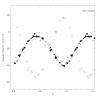 |
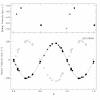 |
| HD 358 | HD 32964 | HD 33647 | HD 173524 | HD 174933 | HD 216494 |
![]()











